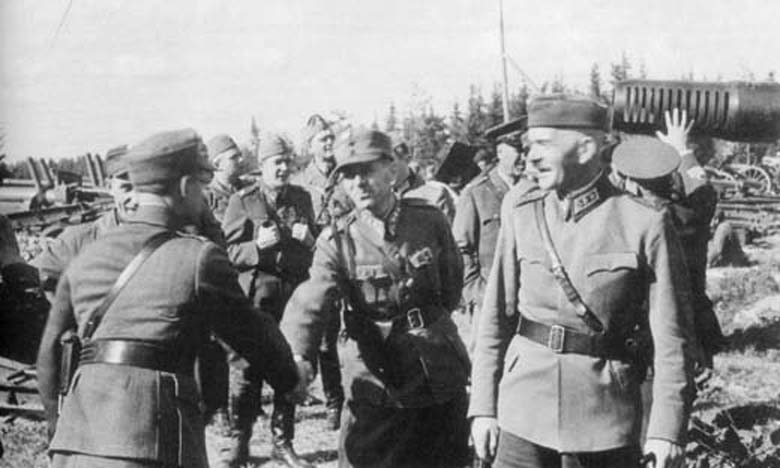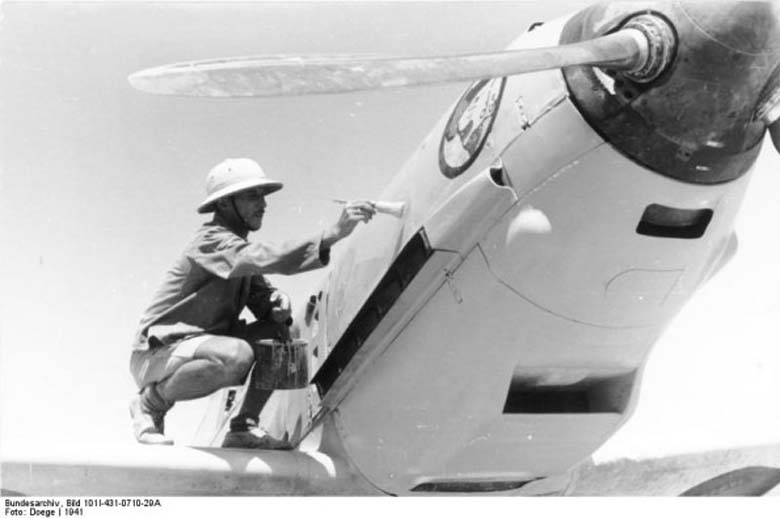Baltic Sea
The Soviet destroyer Yakov Sverdlov sinks on a mine off Cape Juminda.
[Eastern Front
The Finns recapture Viipuri, which they had to cede to the Soviet Union following the 'Winter War'. This brings them very close to Leningrad but, despite German insistence, they halt on their pre-war frontier - a decision taken on political grounds. Only a few of their units enter Russian territory, pressing on as far as the Svir River and Lake Oneg, thus cutting Russian communications between the White Sea and the Baltic.
FINLAND AND NORWAYFinnish armor moves toward Viipurii, encountering resistance from the hasitly erected Soviet defenses. After a brief battle, the Finnish Southeastern Army captures Viipurii. Later in the day Kivennapa also falls.
Liberation of Viipuri |
 |
After prolonged fighting, the XXXVI Corps reaches the old Russo-Finnish border in the Salla region. German and Finnish forces penetrate 25 miles along the road to Kandalaksha but are halted on the Verman River.
NORTHERN SECTORTallinn falls to the XXVI Corps after a ferocious struggle. Of 23,000 Soviet soldiers taken out of the city, only 5,000 reach the safety of Kronstadt. 24 of 29 transport vessels are sunk by Keller's 1st Air Fleet and mines in the Gulf of Finland.
On the approaches to Leningrad there is heavy fighting at Kolpino and at Tosno and Mga where the 12th Panzer and 20th Motorized Divisions, supported by 3 infantry divisions, move closer to the Neva.
Leeb orders the encirclement of Leningrad and the capture of the Neva crossings, and the towns of Uritsk, Pulkovo, Pushkin, Kolpino and Ishora. To achieve their targets the German forces are organized into 2 groups, the Krasnogvardievsk Group and the Slutsk-Kolpino Group. The former has the XXXVIII Corps, which has the 1st, 58th, 291st and 254th Infantry Divisions, on the left and the XLI Panzer, which has the 1st and 6th Panzer and 36th Motorized Divisions, in the center, with L Corps, which has the SS Polizei and 269th Infantry Divisions, on the right. The Krasnogvardievsk Group aims to take Krasnogvardievsk, reach the Gulf of Finland and isolate the Soviet forces west of Leningrad.
The Slutsk-Kolpino Groups has the XXVIII Corps with the 121st, 96th and 122nd Divisions and part of the 12th Panzer Division. Its task is to push along the Ishora River and capture Slutsk and Kolpino. To the east, the XXXIX Panzer Corps with the 20th Motorized and the balance of the 12th Panzer Divisions, is to widen the corridor south of Lake Ladoga and then drive east from Sinyavino. The 8th Panzer Division is held in reserve behind the XLI Panzer Corps.
CENTRAL SECTORThe 30th Army launches a ferocious counterattack east of Velizh aimed at relieving the 22nd Army near Velikiye Luki. Initial attacks penetrate the German lines, enabling Gen Dovator to lead his Cavalry Group on a week-long raid inside German lines.
The 16th, 19th and 20th Armies continue their attacks along the Dukhovschina-Yartsevo line.
[Iran
The fighting comes to an end. Two days later the Soviet and British troops link up at Kazvin. The final terms are agreed by the Iranian government on September 9. The British and Soviets are to occupy certain key points but agree to keep out of Teheran.
[Yugoslavia
Gen Milan Nedic is appointed to lead the puppet Serbian government backed by Germany.
[ Australian Pilot Clive Caldwell’s P-40 'Tomahawk' |
 |